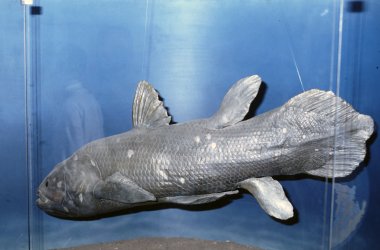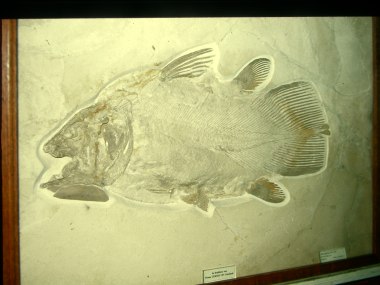
Coelacanth in the museum in Oxford

Fossil coelacanth in the Teyler Museum at
Haarlem (NL)
The coelacanth is an example of a 'living fossil'. That is a name for a plant or animal that has hardly changed in the course of many millions of years. Other living fossils are the Ginkgo and the Bald-cypress (Taxodium).
Plants and animals will not change when the circumstances are very stable. Evolution is always a reaction to a changing environment. When everything is all right, if there is enough food and space, if there are no dangerous predators, then a species will stay as it is.
Know more?
Living
fossil
Swimming coelacanth
The changes in species, which are reviewed till now, are relatively small.
These small changes are called micro-evolution. But there are
also large, radical changes. Think of the occurrence of land animals with
four legs, the occurrence of wings, eyes and consciousness. This is called
macro-evolution.
Macro-evolution is more difficult to understand than micro-evolution. Examples
of the last type are observable, like in the colour of the Peppered Moth
around Manchester, in the beaks of the finches on the Galapagos and in many
other cases which have been described. Hugo de Vries thought that saltations
(sudden and radical mutations in the chromosomes) were responsible for the
occurrence of new life forms. Indeed there are some examples of saltations
but in by far the most occasions macro-evolution is the sum of an ongoing
micro-evolution.
Know more?
What
is macroevolution?